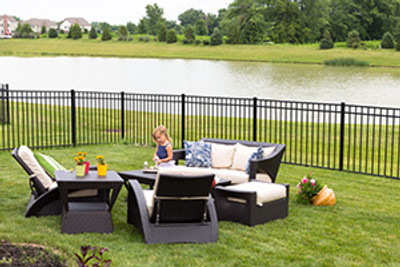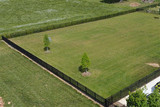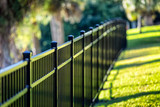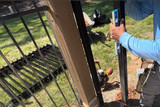Creating a Safe Haven: Fencing in a Yard for Kids
As children grow and explore the world around them, ensuring their safety becomes a top priority for parents and caregivers. One effective way to create a safe and secure environment for kids to play is by installing a fence around your yard. A well-designed fence not only keeps children safe but also provides them with a space to learn, play, and develop their skills. In this blog post, we'll delve into the benefits of fencing in a yard for kids and offer some tips on how to create a kid-friendly fenced area.
The Importance of a Kid-Friendly Yard Fence
- Safety First: A yard fence acts as a physical barrier, preventing young children from wandering off into potentially dangerous areas like streets or neighboring properties. It also deters unwanted visitors, providing an added layer of security for your little ones.
- Uninterrupted Play: Fencing in your yard offers kids a designated area where they can explore, play, and engage in outdoor activities without constant supervision. This gives parents peace of mind, knowing their children are contained within a secure space.
- Privacy and Boundaries: Fences establish clear boundaries between your property and the outside world. This not only helps your kids understand the limits of their play area but also offers your family a sense of privacy.
- Customizable Design: Kid-friendly yard fences come in various styles, colors, and materials, allowing you to choose one that complements your home's aesthetics while providing a safe and attractive play space for your children.
Tips for Designing a Kid-Friendly Fenced Yard
- Choose the Right Height: Ensure the fence is high enough to prevent climbing while providing adequate visibility. A fence that's at least 4 to 5 feet tall is generally recommended.
- Smooth Surfaces: Opt for a fence with smooth surfaces to prevent splinters or injuries. Avoid fences with decorative elements that could potentially be used as handholds by adventurous climbers.
- Spacing Matters: If the fence has gaps between slats or pickets, make sure they're not wide enough for a child to squeeze through. This prevents accidental escape attempts.
- Secure Gates: Install self-closing and self-latching gates to ensure that the gate is always closed when not in use. This prevents children from leaving the fenced area inadvertently.
- Soft Landscaping: Consider adding soft landscaping elements like grass or rubber mulch within the fenced area. This provides a cushioned surface in case of falls and encourages outdoor play.
- Child-Friendly Features: Incorporate child-friendly features like a sandbox, swing set, or playhouse within the fenced yard to enhance the play experience.
- Educational Opportunities: Create an environment that stimulates learning by including features like a small vegetable garden, bird feeders, or outdoor art stations.
- Supervision Still Matters: While a fenced yard offers safety, parental supervision remains essential, especially for younger children. Regularly check the fence for any signs of wear or damage.
Conclusion
Fencing in your yard for kids is a thoughtful investment in their safety, well-being, and development. By designing a kid-friendly fenced area, you provide a space where children can explore, play, and learn while giving yourself peace of mind. With careful consideration of design, safety measures, and interactive features, you can create a haven that fosters growth and cherished childhood memories. So, go ahead and turn your yard into a safe and exciting playground for your little ones!
Recent Posts
-
Experience, Reputation, Customer Service
Here’s why buying from OnlineFenceStore.com is a strong choice for fencing products: Key Advantages …Aug 13th 2025 -
How to Order Fence from OnlineFenceStore.com: A Step-by-Step Guide
How to Order Fence from OnlineFenceStore.com: A Step-by-Step Guide Ordering a fence online has never …Jul 30th 2025 -
Plumb vs. Level: Understanding the Difference in Fence Post Installation
When it comes to installing a fence, getting the job done right the first time is crucial. One of th …Jun 19th 2025







